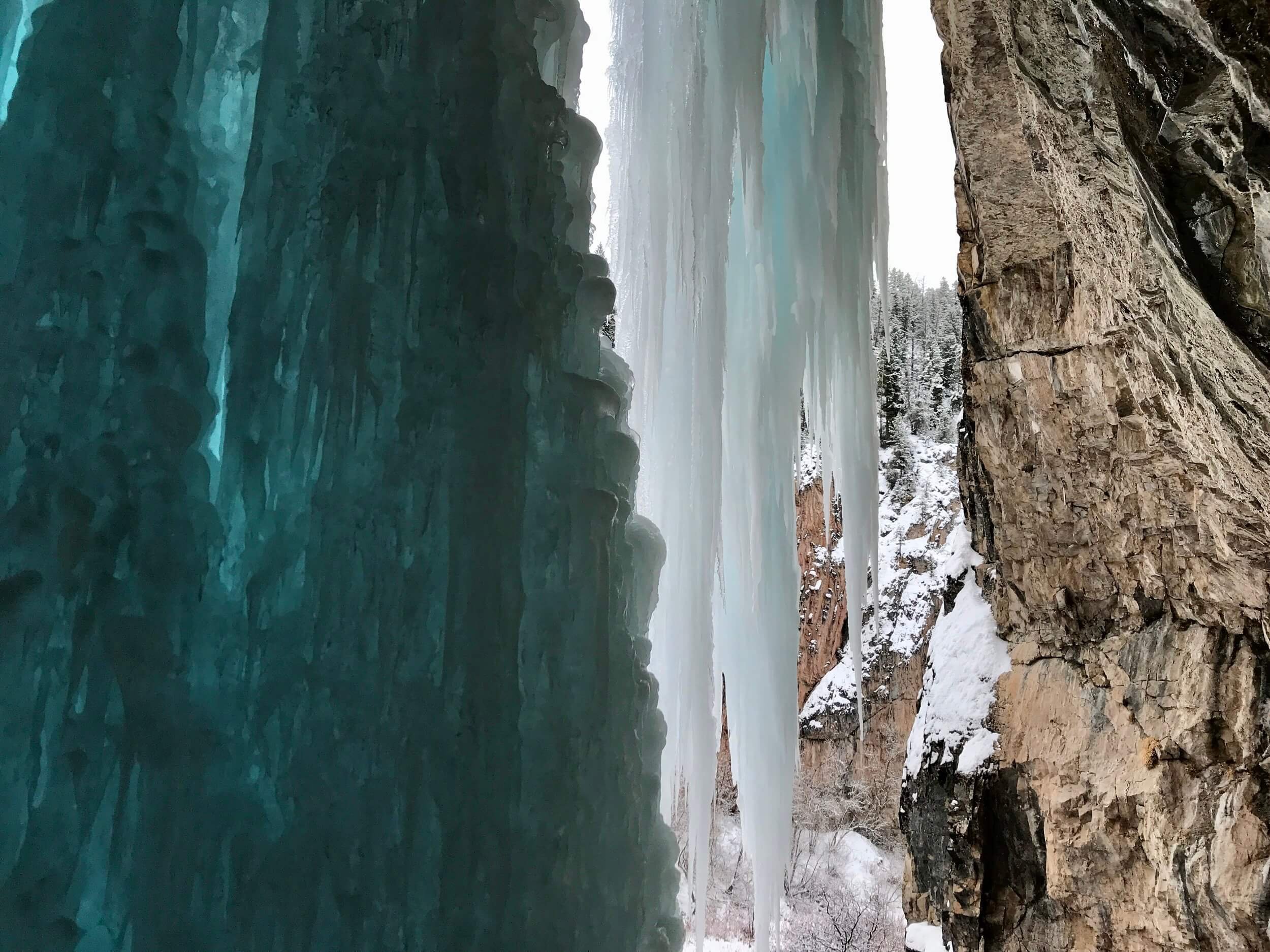
Come Ice Climbing on the Pillars of Rifle, Colorado
Rifle Mountain Park is best known for its cutting edge rock climbs, however it is also home to some fantastic ice climbing. The same convenience and beauty that this small canyon provides in warmer months also applies in the winter. With the convenience of being able to drive into the canyon and park just below your desired route, the ice climbing in Rifle is always just a minute or two from the car! Rifle Mountain Park is somewhat of a hidden gem in the ice climbing world, especially when compared to more well known areas in Colorado like The Ouray Ice Park, therein lies one of the most attractive features: it is rarely crowded and welcome respite from the more popular spots
Private Guiding & Instruction
Nestled in between the popular rock climbing on the limestone cliffs, the ice climbing in Rifle Mountain Park provides a truly unique experience. The secluded and peaceful nature of the canyon combined with the impressive pillars of ice dribbling out of the vertical cliffs makes Rifle a perfect winter ice climbing destination. There are climbs here for just about everyone from beginner to expert. Here are some of our favorite ice climbing routes in Rifle Mountain Park:
Final Curtain (WI3/4)
Middle Ice Cave (WI4)
Pleasure Pillar (WI5)
Soul on Ice (WI5)
Bonus Routes:
On many days it is also possible to combine a day of ice climbing at Rifle with an afternoon rock climb on one of the sunny walls opposite the ice. Dual-sport ice and rock climbing is a great, fun way to round out a day in Rifle Mountain Park!
Rifle Mountain Park typically has reliable ice climbing from late December through late February.
Climbers should expect intermediate to challenging routes and should have previous ice climbing experience. Approaches are within 10 minutes and low commitment, though they can be steep.
Grand Junction or Rifle Regional Airport are convenient airport locations for this destination if arriving by air. A personal or rental car is necessary to travel to/from Rifle Mountain Park.
Grand Junction is based 1.5 hours away and the town of Rifle is 15 minutes away. There are multiple hotels in both areas. There is paid camping in Rifle Mountain Park though it can be busy during peak climbing season.
Climbers are responsible for providing their own personal clothing and equipment. Skyward Mountaineering may assist in supplying technical equipment with advanced notice. See recommended gear list below:
-
Underwear: Should be comfortable for a full day of activity, synthetic or merino wool will wick moisture away from the body
Heavyweight socks: Over-the-calf winter weight for superior warmth. Layering two pairs of socks is not recommended as it may impede blood flow and make your toes colder
Warm hat: Should be thin enough to fit under your helmet
Neck gaiter: Optional, lightweight and versatile for adding warmth around ears or covering your face in windy conditions
Softshell climbing gloves: Waterproof with high dexterity. 2 pairs recommended, one midweight and one heavyweight. Guide’s midweight recommendation - Showa Temres 282-02 (size up one from normal)
Mixed climbing gloves: Optional, these highly dexterous gloves have minimal insulation and are best for warmer days, lead climbing or mixed climbing
Midweight top baselayer: Merino wool or synthetic fibers will wick sweat away. Thumb loops are recommended to keep your wrists from being exposed and your hands warmer
Heavyweight bottom baselayer
Midweight fleece jacket: An integrated hood adds warmth and weather protection
Active insulation jacket: Ideal balance of breathability and warmth for winter aerobic activity
Midweight vest: Optional, adds warmth to your core without restricting movement
Softshell jacket: Midweight with a helmet compatible hood. Should have Durable Water Resistance (DWR) coating
Softshell pants: Midweight with reinforced instep. Avoid ski pants as they are often too baggy and likely to catch on your crampons
Insulated parka: Down is lighter/more compressible and a hydrophobic treated down will insulate even when wet. Should have at least 200 grams of 800 fill insulation
-
Climbing backpack: Approximately 30 liters with ice tool attachments
Mountaineering boots: Must be rigid with toe and heel welts for full crampon compatibility
Vertical frontpoint crampons: Dualpoints are better for continuous ice while monopoints are lighter and better suited for mixed climbing
Crampon pouch: Reusing a USPS Tyvek mailing package is a cost effective option, though specific manufactured options exist and are more durable
Technical ice tools: Remove any adze attachment as this may pose an unnecessary hazard for waterfall ice climbing
Climbing helmet: Must be UIAA certified
Harness: Recommended ice clipper compatibility
Tubular belay device with round bar stock locking carabiner
48 inch (120cm) sewn nylon sling: A Personal Anchor System (PAS) can be used instead, though is less versatile
1-2 Locking carabiners: Lightweight, screwgate is easier to operate than a triple-action carabiner
1-2 Non locking carabiners: Wiregates are less prone to freezing
2 Ice Clippers: Optional
Trekking pole: Though short, many of the approaches are steep and a single trekking pole will help with balance on slippery/snowy trails
-
Sunglasses: Dimmable recommended, CAT 3 lenses w/ athletic fit
Small tube of sunscreen and SPF chap stick
First aid kit: Small, should include any personal medications
Hand warmers: Optional, for those colder days
Fully charged phone
1-2 liters of water: A thermos with your favorite hot drink is recommended. Avoid water bladders and hoses as they are prone to puncture and freezing in a winter environment
High energy lunch and snacks: A healthy mix of fats, sugar, and protein for a full day of the on-the-go (leftover pizza or sandwiches are a great midday pick-me-up)
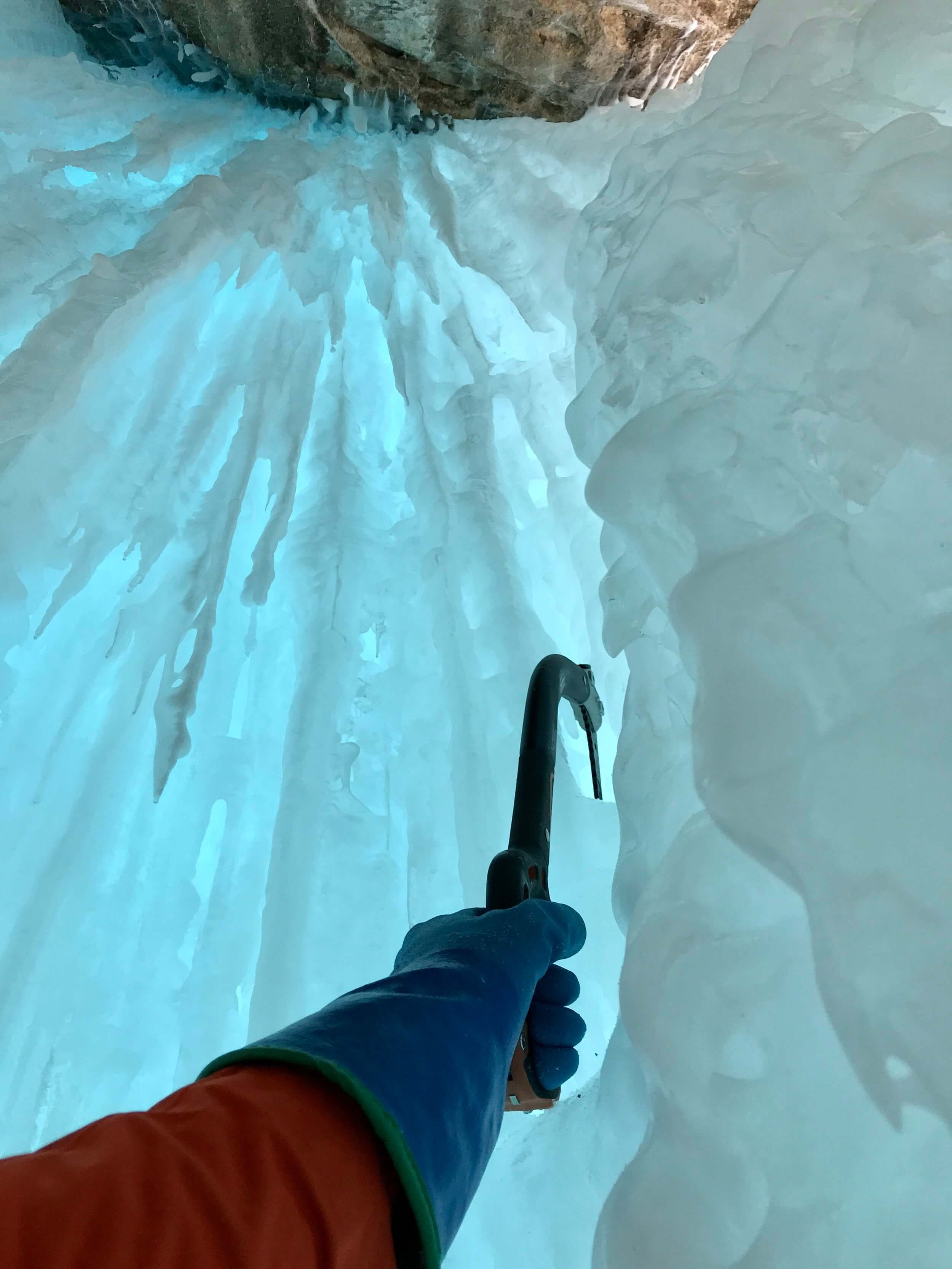

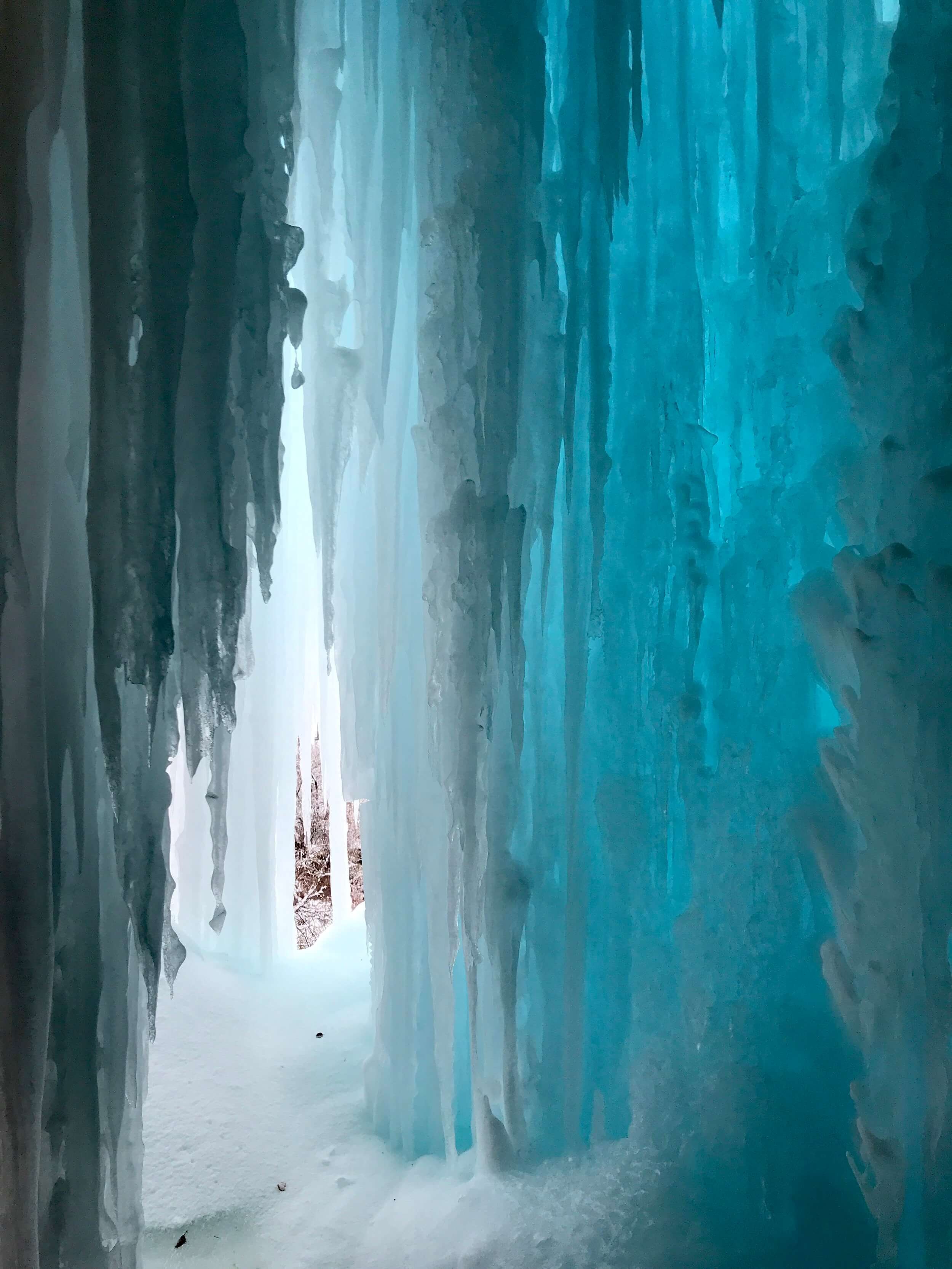
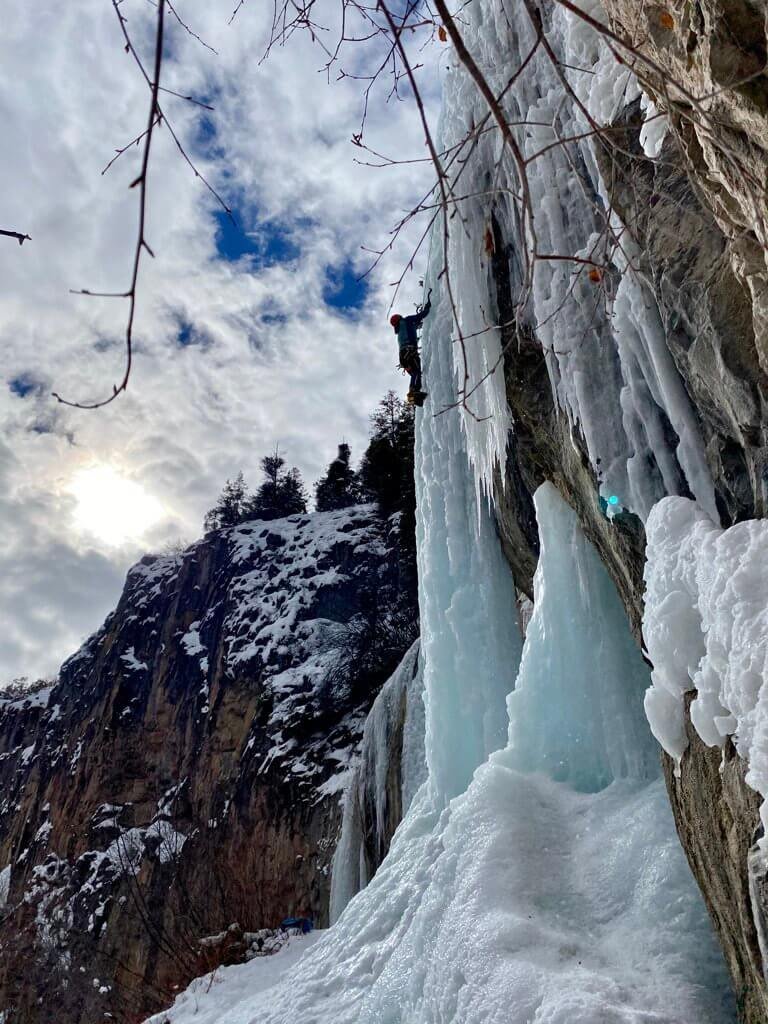
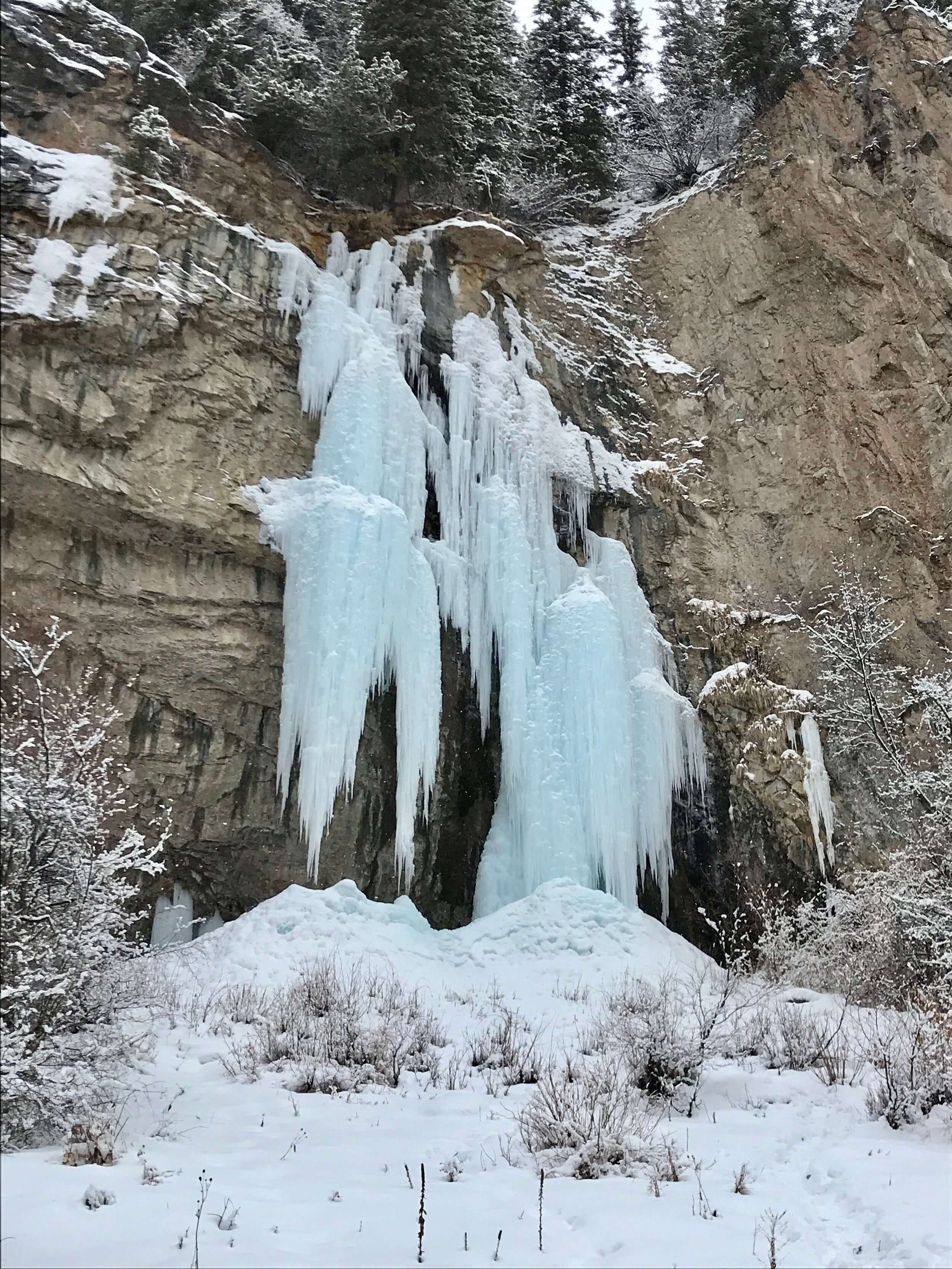

1 climber: $575/day
2 climbers: $385/climber/day
3 climbers: $330/climber/day
4 climbers: $275/climber/day
Includes:
1 day of guided climbing with an AMGA Alpine guide
Group climbing equipment (ropes, ice/rock protection and anchor material)
Does Not Include:
Additional expenses associated with a change in the itinerary
Transportation
Lodging
Meals
Guide gratuity

